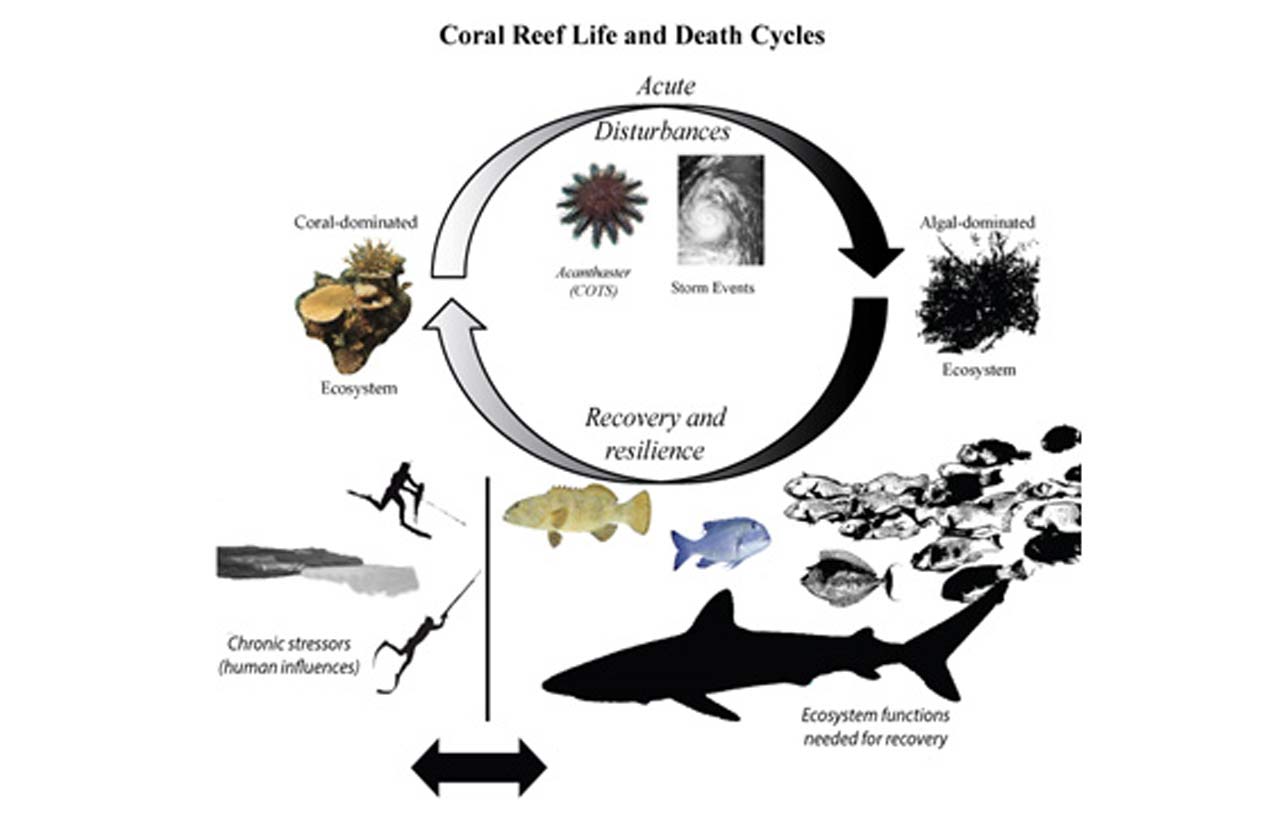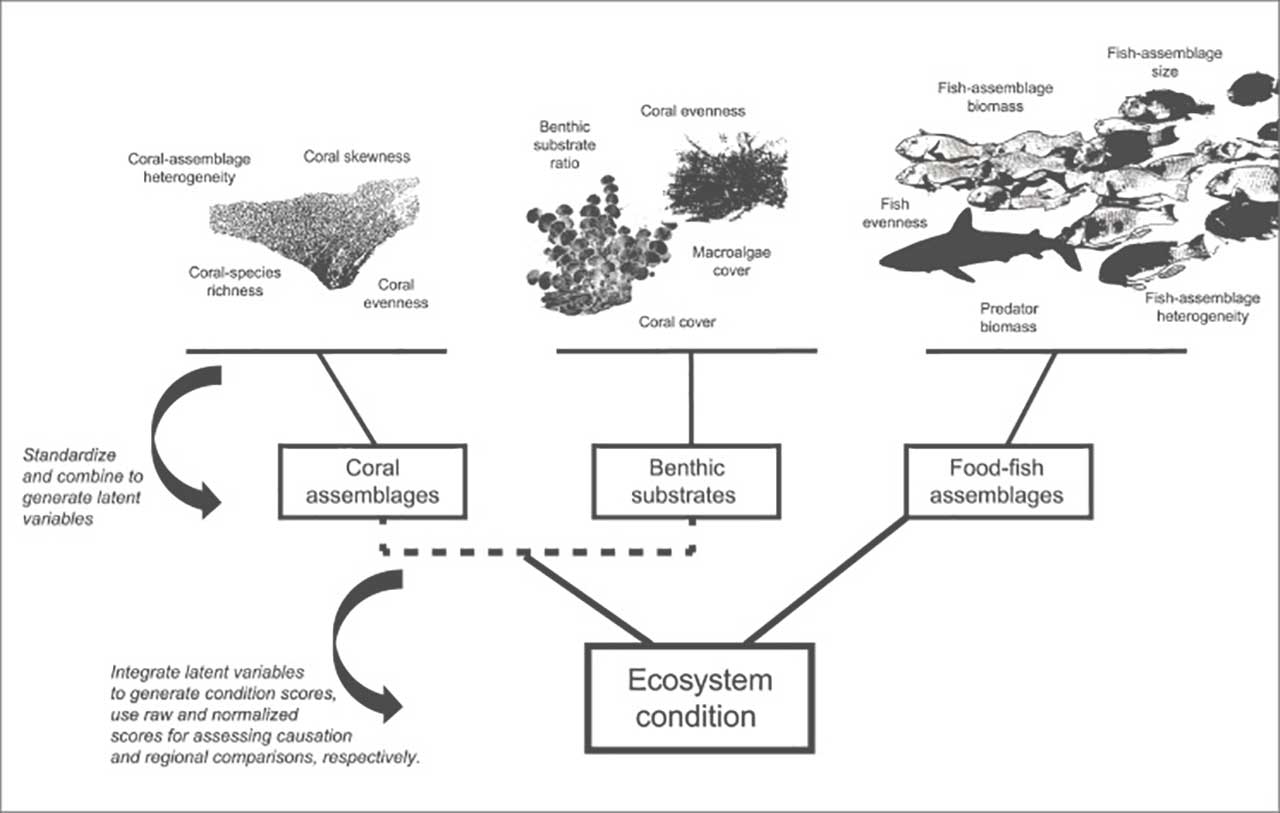Effective Conservation of Coral-Reef Habitats
Defining effective conservation was one of the first steps the measures working group approached. Through time, effective conservation for each monitoring site was considered if natural disturbance and recovery cycles occurred at expected timeframes, and expected recovery trajectories existed (see figure below). Local stressors such as fishing and pollution serve to slow recovery, or even stop the recovery trajectories. This forms the ultimate measure of effective conservation defined by the group.
However, standardized data for years would be required to make this assessment. So, an interim measure of effective conservation was defined until time-series data become available. Effective conservation was based upon spatial analyses, whereby all sites would be judged against the highest quality site in a similar habitat. Sites were scored based upon a series of metrics that together defined health of the overall reef ecosystem. This was akin to blood pressure, cholesterol, heart rate together describing our health (see figure below).
















Are you ready to help?
Join, contribute, or collaborate with the Micronesia Reef Monitoring program
